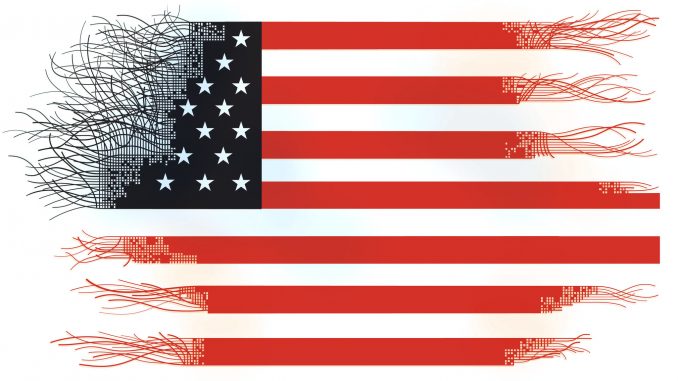
By Ian Ezinga
This opinion doesn’t serve to address anyone particular item of news or current event, which, admittingly, may detract from its immediate value to the reader. This piece’s purpose is to embark on a long-standing project of mine to build a framework to better understand the course of events that those alive in the present must witness. Understanding the course of events is different than creating an action plan, but is critical for building a sustainable plan for future generations to buy into. Understanding news and culture from a vantage point located somewhere in America can only be fruitful if one sits on a bulwark comprised of an understanding of the American psyche’s relationship to narrative and myth.
When stripped of statistics about GDP, theories on voting preferences, or headlines of our most recent overseas conflict, the United States remains a deeply complex web of ambitions, ideologies, and most importantly, narratives. All of these separate entities have their own lineage which, while traceable, are impossible to string together in a meaningful way to actually make sense of the past or the present.
One of the oldest metaphors to describe America is that of the melting pot. It remains accurate and is critical to our understanding of our past and present. But escaping the more common usage of the metaphor, which speaks to the mixing of cultures and ideas, lies the key to my use case which is the blending of narratives. Breathing today, we all have stories that, if one had unlimited access to non-existent resources and time, could be traced back to the first record of human consciousness. These stories are the foundation of all that is around us.
The stories we tell ourselves create the reality around us. The issue, then, is to untangle the countless different narratives which all have independent, and often competing, aims in explaining the world around us. These narratives often overlap and interact with one another in significant ways, but are also commonly studied and viewed on their own. There are, of course, the stories of the bourgeois and the workers, but there are also the stories from people of color, indigenous groups, immigrants, the young and old, LGBTQ individuals, and countless more. Each of these stories has a nearly untraceable beginning but also contains an ending or some vision of the future. The endings or visions which these stories inevitably contain may be explicitly mapped out, more ambiguous, or not altogether realized.
Any attempt at understanding the United States cannot begin without recognizing the power of narrative and the nation’s countless and often competing, stories and myths. This project’s aim is to find a commonality among them. A commonality that isn’t designed to unify these narratives, as that is impossible, but merely to comprehend this dizzying present. Looking at the stories of workers and the bourgeois is, in my opinion, the most useful starting point. But it is tremendously incomplete on its own.
The first iteration of this project, which I guess will occupy the rest of my life, doesn’t conclude with an answer as to what that commonality is. But my quest to find and promote practical solutions to our earthly struggles lends itself to trying to uncover the mystery of this commonality. My hypothesis, at this point in time, is that it revolves around the ways in which these narratives confront the idea of America, not the material reality itself. Yes, the stories we tell ourselves create the reality around us, but understanding the reality around us can only be done by analyzing the stories we tell ourselves.
